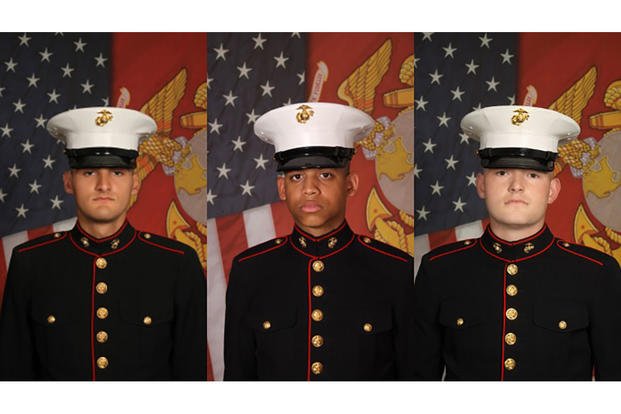Three Camp Lejeune Marines found dead in a vehicle outside of a North Carolina gas station this summer were potentially exposed to carbon monoxide through rusted and disconnected exhaust pipes, according to a medical examiner's report released to Military.com on Wednesday.
The three -- all lance corporals in the Corps -- were found by a fellow Marine after one of them failed to show up to the airport in Oklahoma, triggering a search that led authorities to a Speedway gas station 50 minutes south of the base.
Military.com previously reported that the Marine who found the lance corporals noted the car to be lowered and that the exhaust may have been damaged in some way. The medical report appeared to corroborate that account.
Read Next: US Military Grounds Entire Fleet of Osprey Aircraft Following a Deadly Crash off the Coast of Japan
The three lance corporals were Merax Dockery, 23; Ivan Garcia, 23; and Tanner Kaltenberg, 19.
"The car was noted to be 'lowered' and it was noted that the exhaust pipes were not connected and rusted," the medical examiner report said. "It appeared that exhaust from the vehicle would have been released under the passenger cabin of the vehicle and not at the rear bumper."
The report also noted that the car had been modified "in a way that caused multiple large defects in the exhaust system" and that the air conditioning system did not work properly. It is unclear from the report if one of the Marines made the modifications, which according to the Marine who found the three were often aesthetic, or if they were done by a shop.
Both the Marine who discovered the lance corporals and the medical examiner noted that the keys were in the "on" position and the windows were up. The medical examiner report said that the vehicle was unlocked.
"These findings, together with the findings from the scene, are compatible with asphyxia by a combination of oxygen deprivation and carbon monoxide intoxication," the report said, which corroborated initial end-findings from authorities after the lance corporals were discovered.
The medical examiner preliminary summary also said that there were "no obvious signs of suicide, foul play or drug use."
Toxicology reports released to Military.com on the same day that the medical examiner summary was made public also ruled out any drug use.
The toxicology reports measured the amount of carbon monoxide found in the Marines' blood, which ranged between 24%-27% between the three. According to the University of Rochester Medical Center, the average percent of carbon monoxide in an adult non-smoker's blood is less than 2%.
In August, despite the medical examiner report being completed the day that the three Marines were discovered, local police could not say how exactly the lance corporals were exposed to the odorless, deadly gas.
"How were the Marines exposed to carbon monoxide? The carbon monoxide came from the vehicle," Sgt. Chester Ward, a spokesperson for the Pender County Sheriff's Office, told Military.com in an email in August. "I can't say if any modifications caused the carbon monoxide leak. However, it is most likely the vehicle had a malfunction somewhere for it to leak."
After their deaths, the Marines were given honors across the country. Garcia was honored in Naples, Florida, and Kaltenberg was memorialized by his community in Verona, Wisconsin.
Heather Glass, Dockery's mother, previously told Military.com that "he was just a great soul. If you got to know him, he was definitely an infectious person to be around. He would always make you smile. He was just a very special person to me and everyone he knew."
Related: Local Police Can't Explain How 3 Marines Found Dead in Car Were Exposed to Carbon Monoxide














